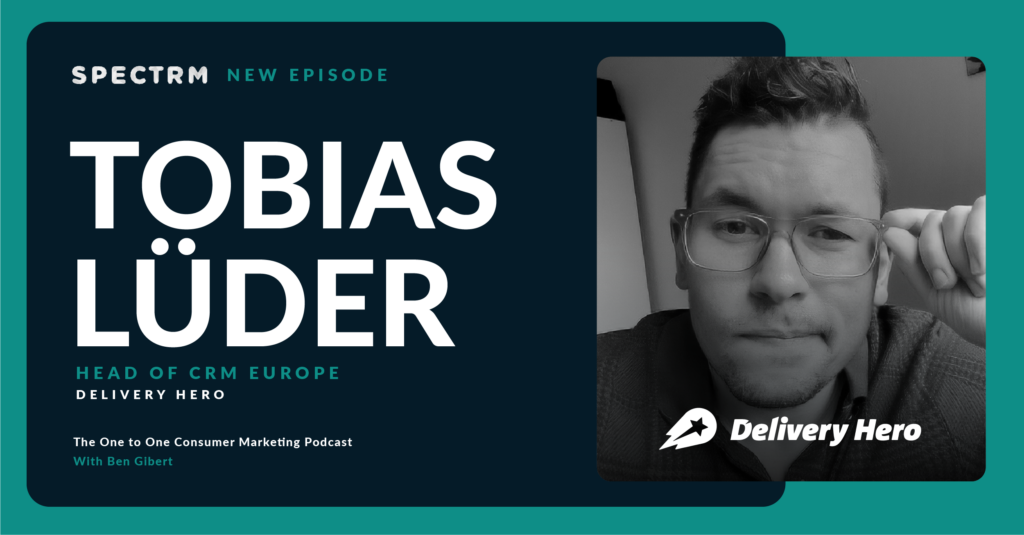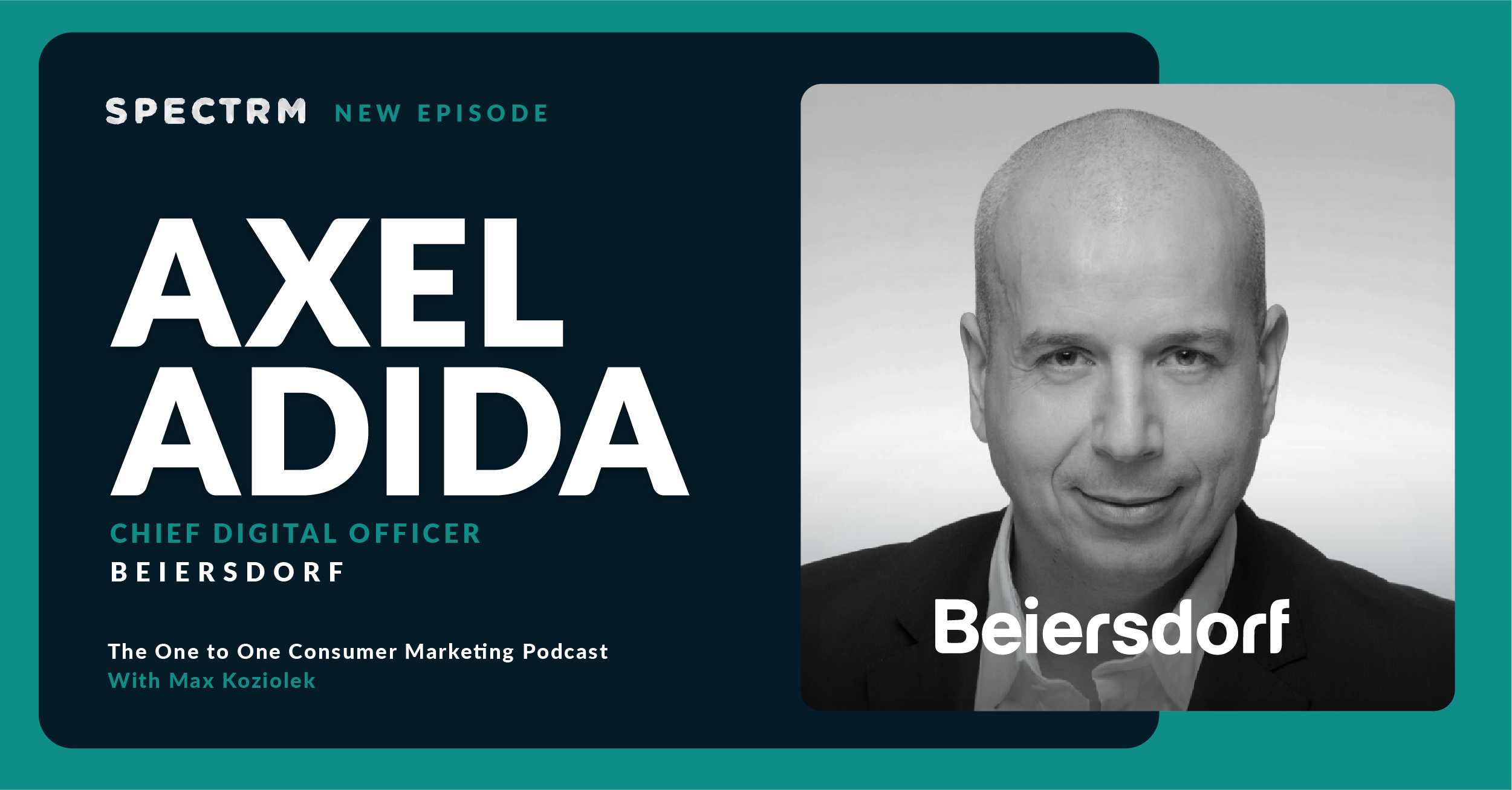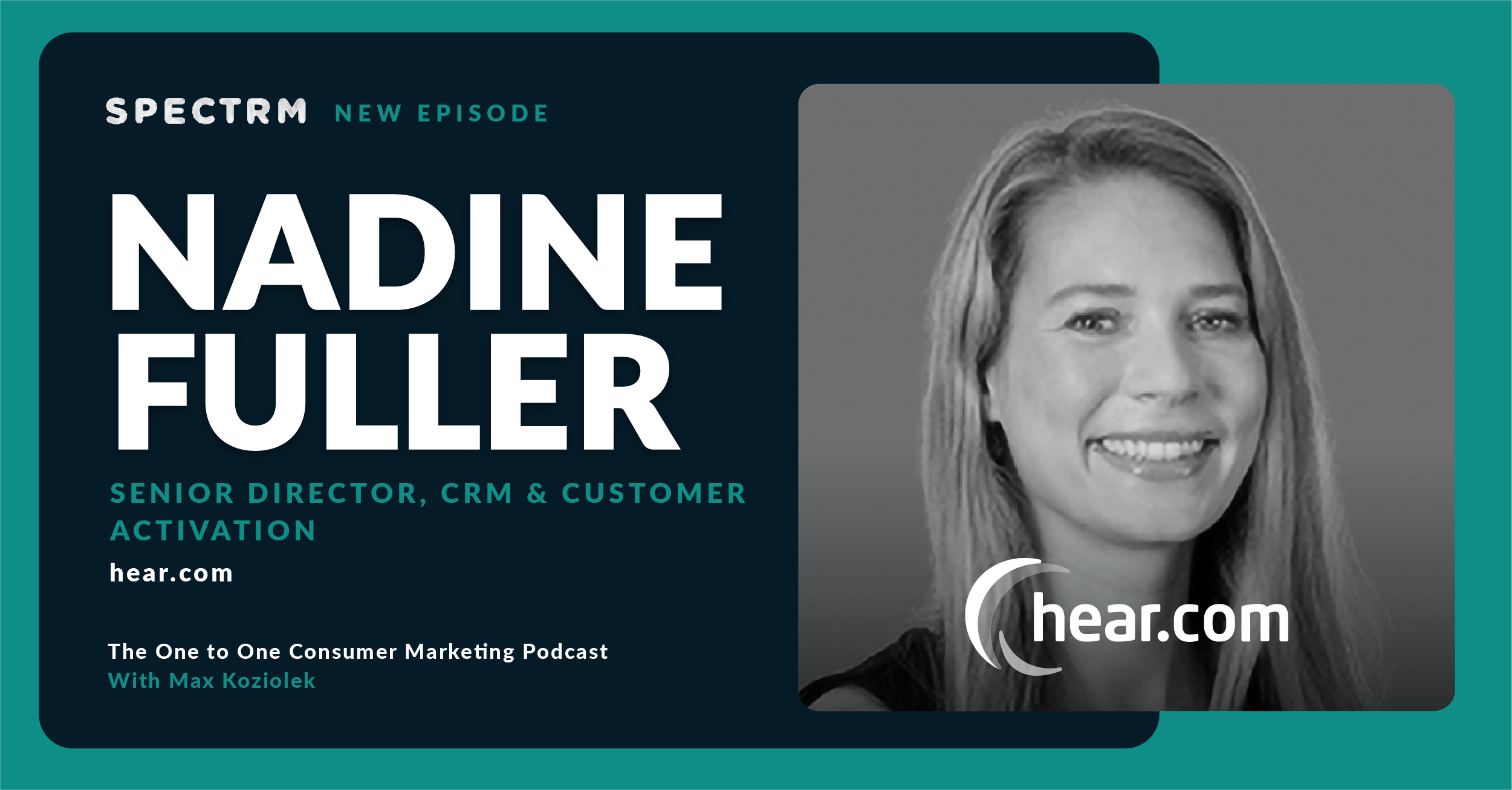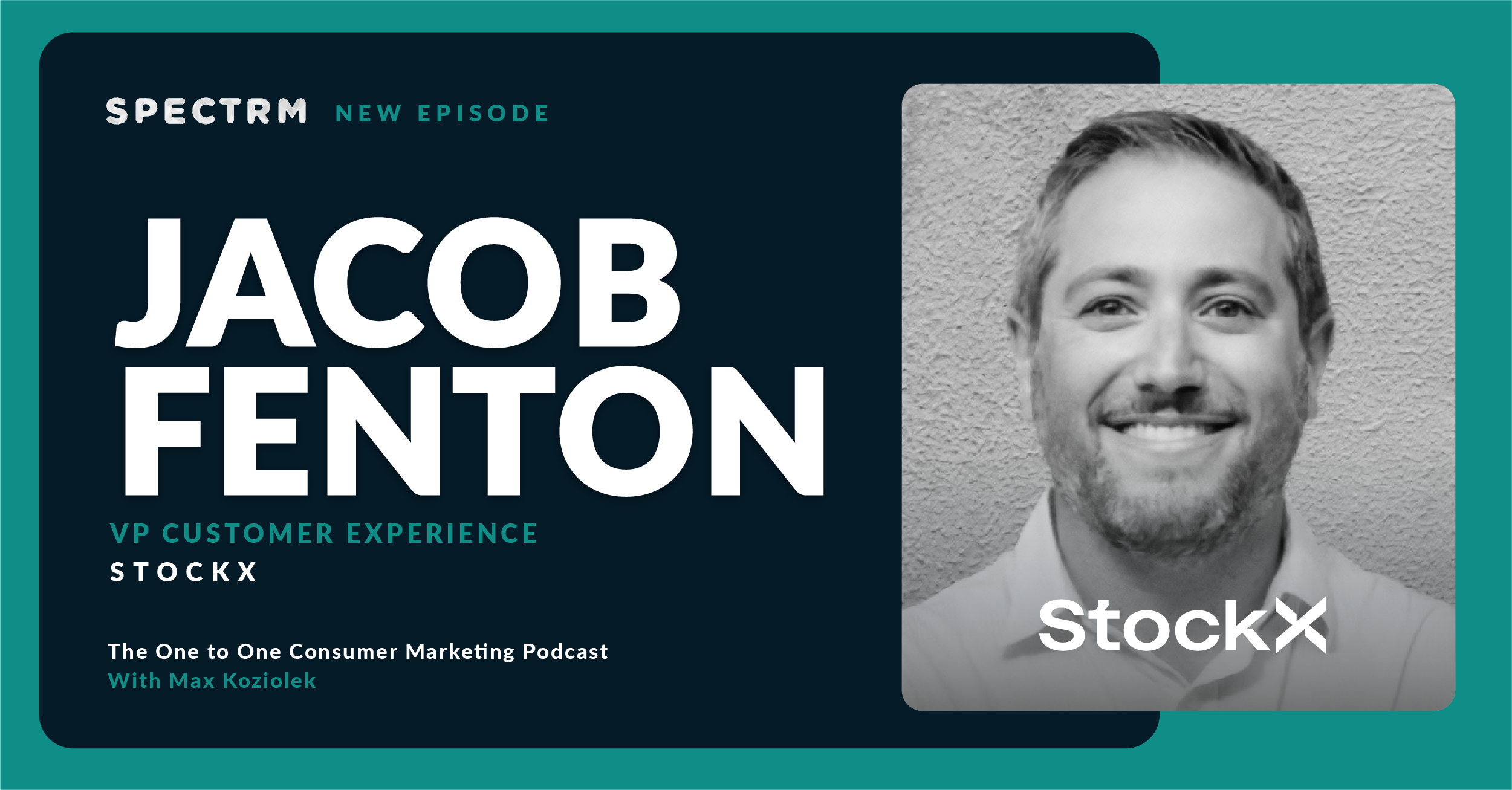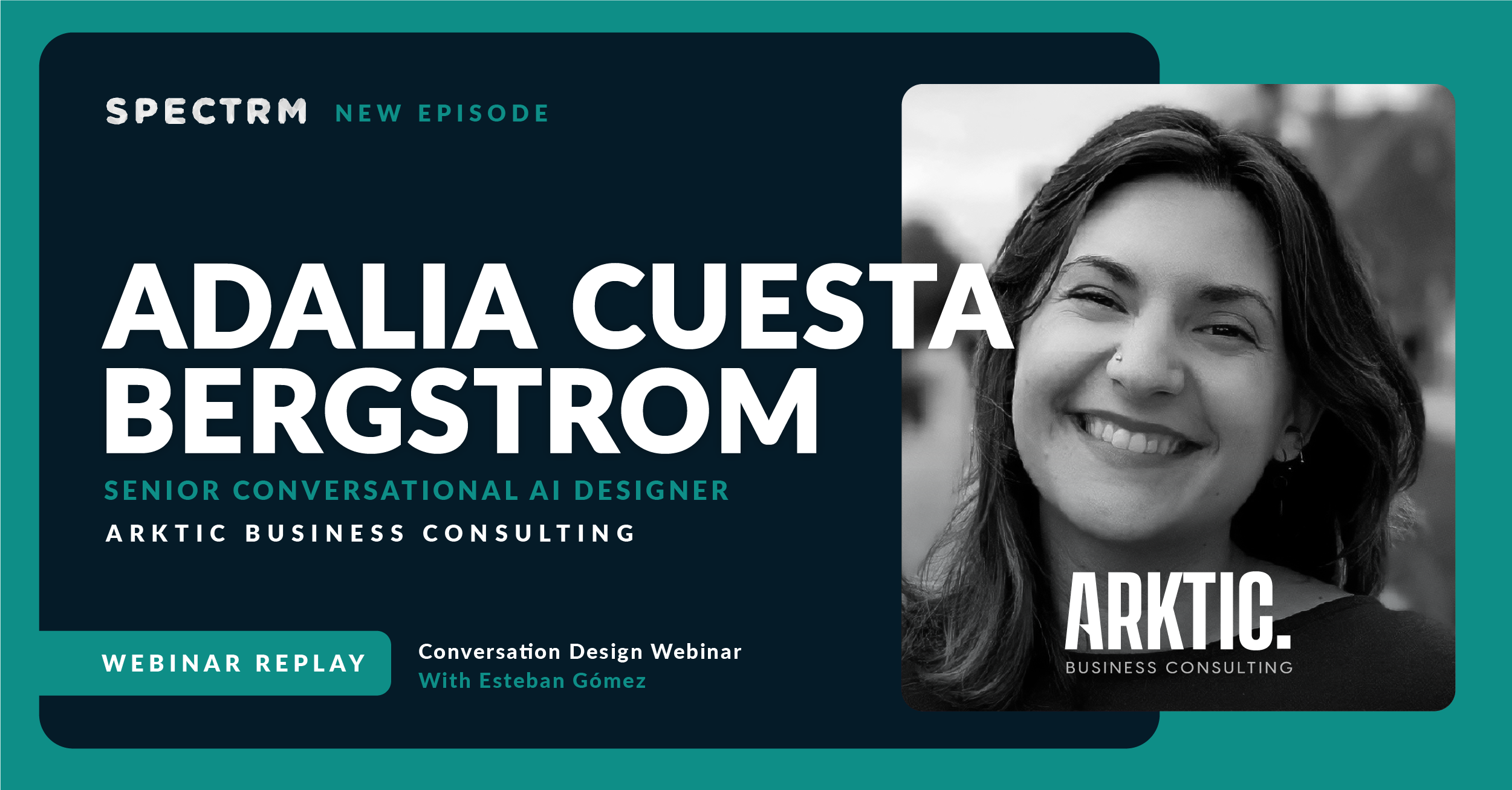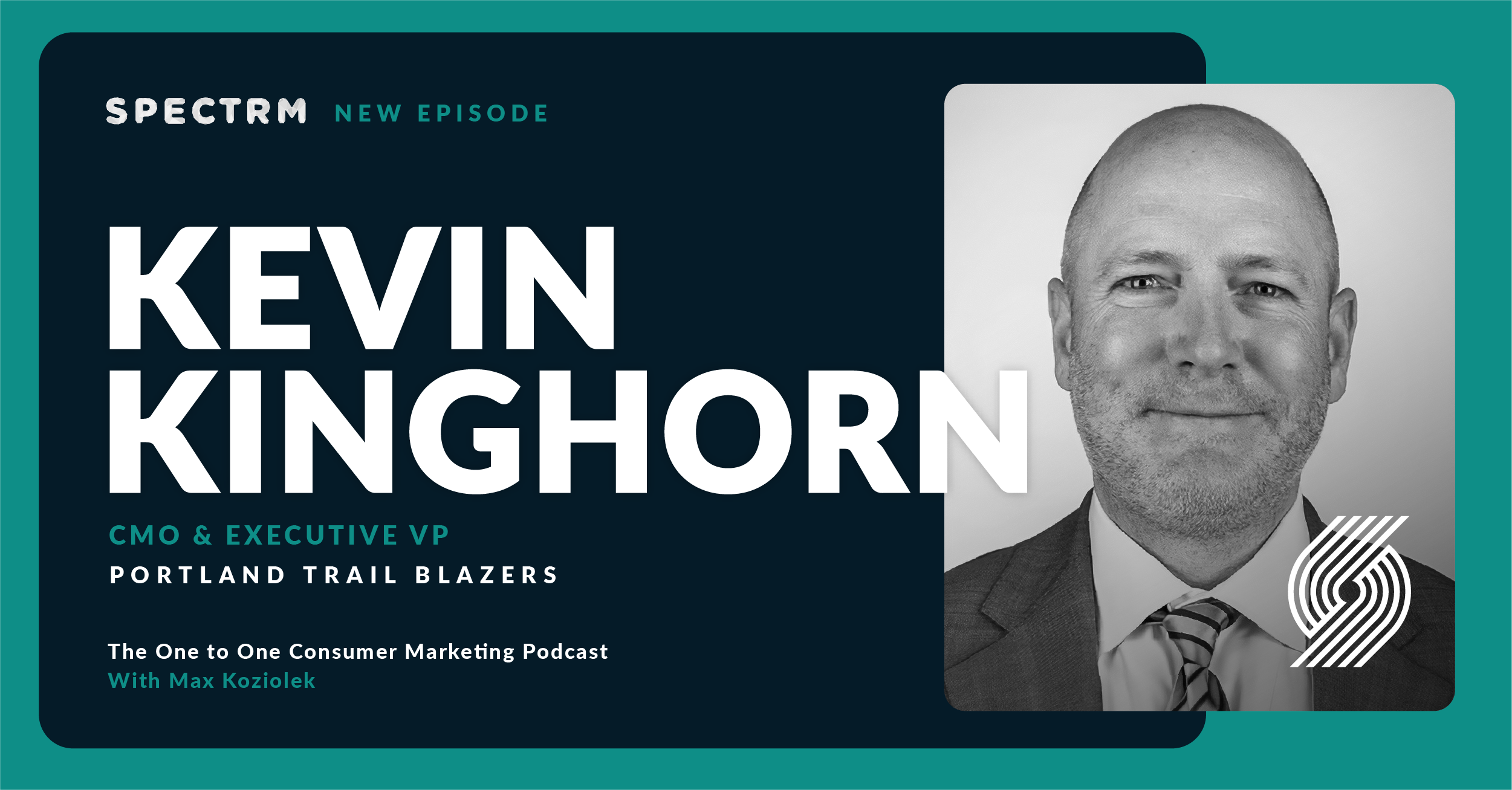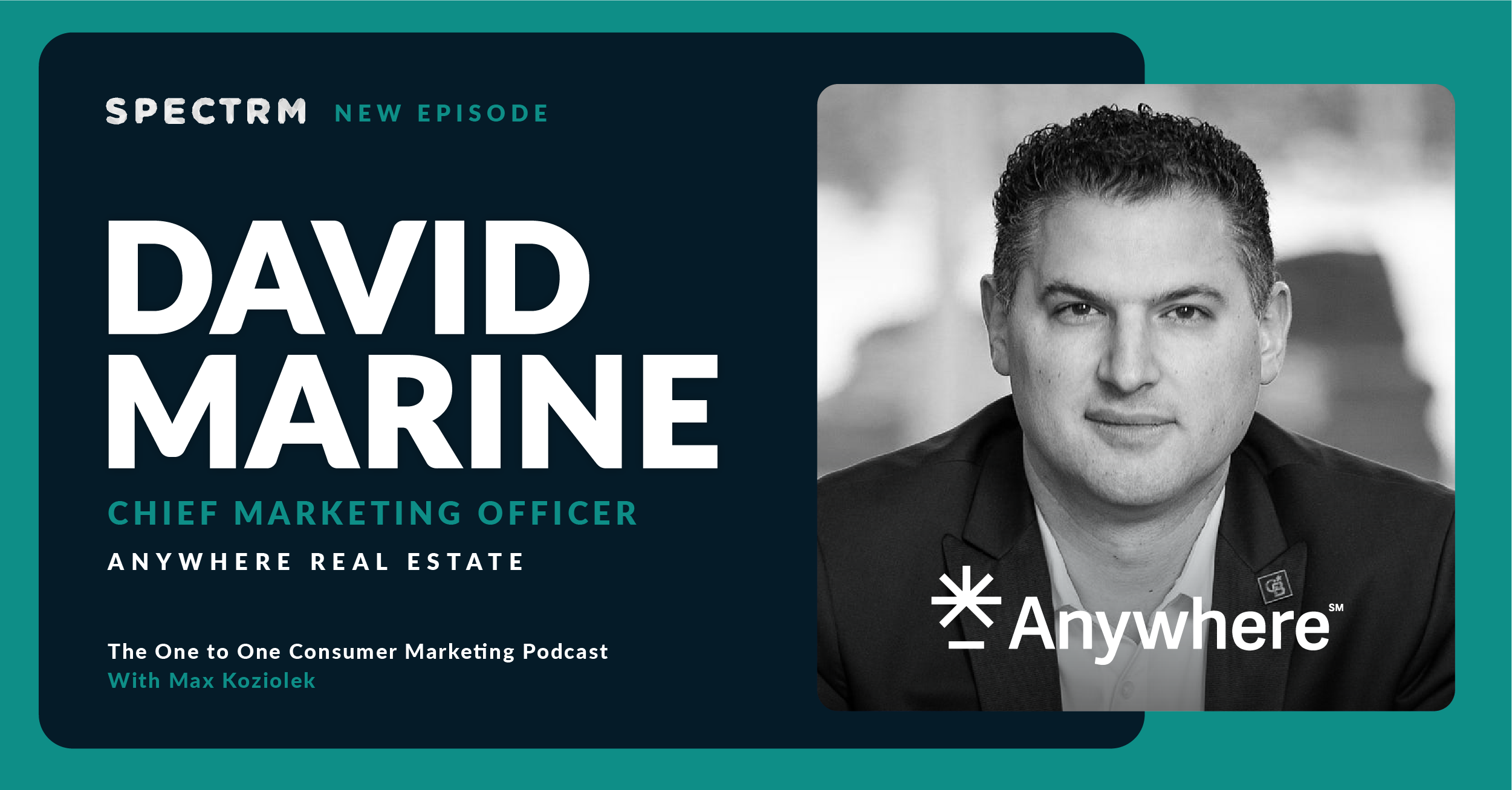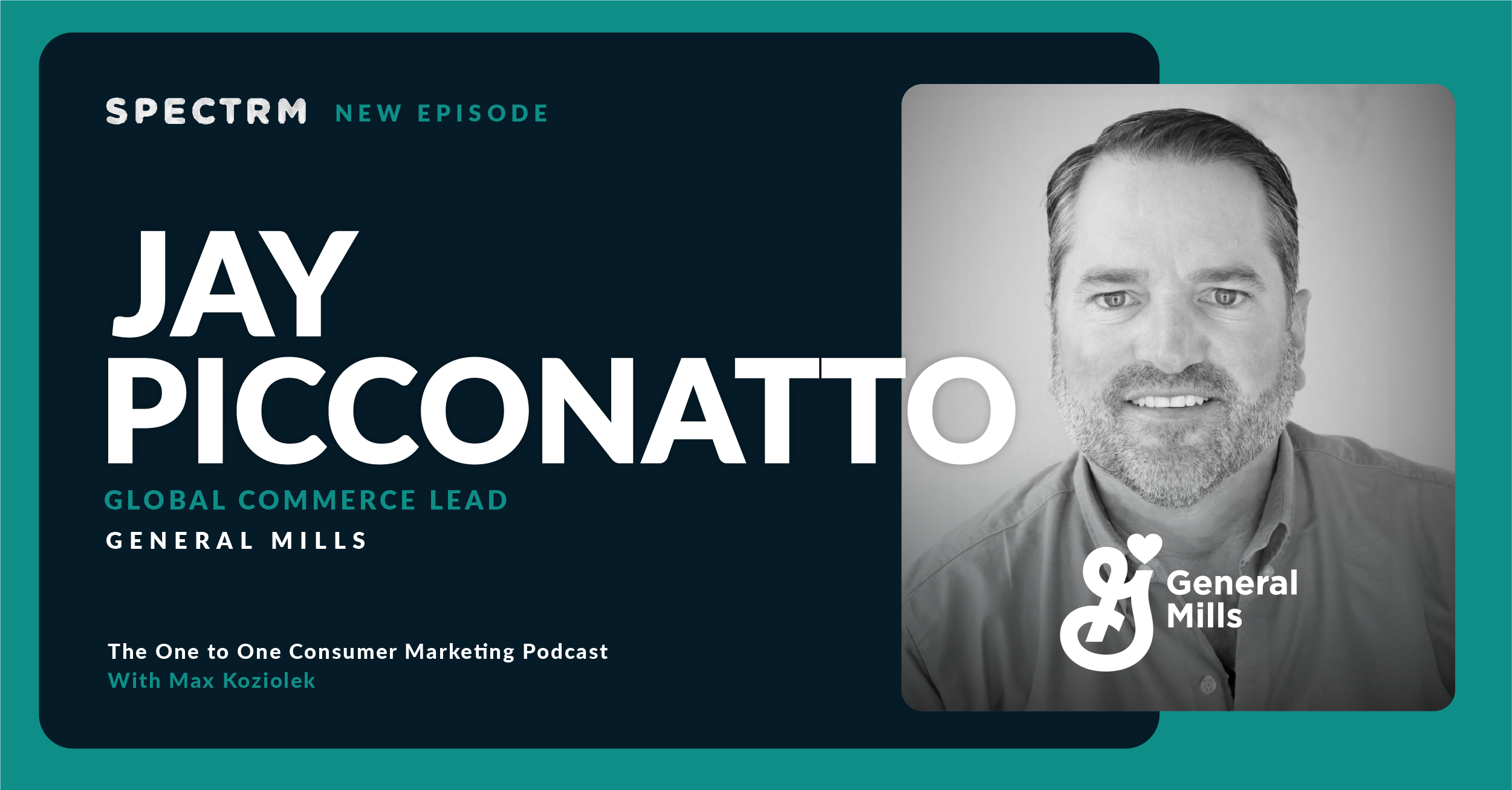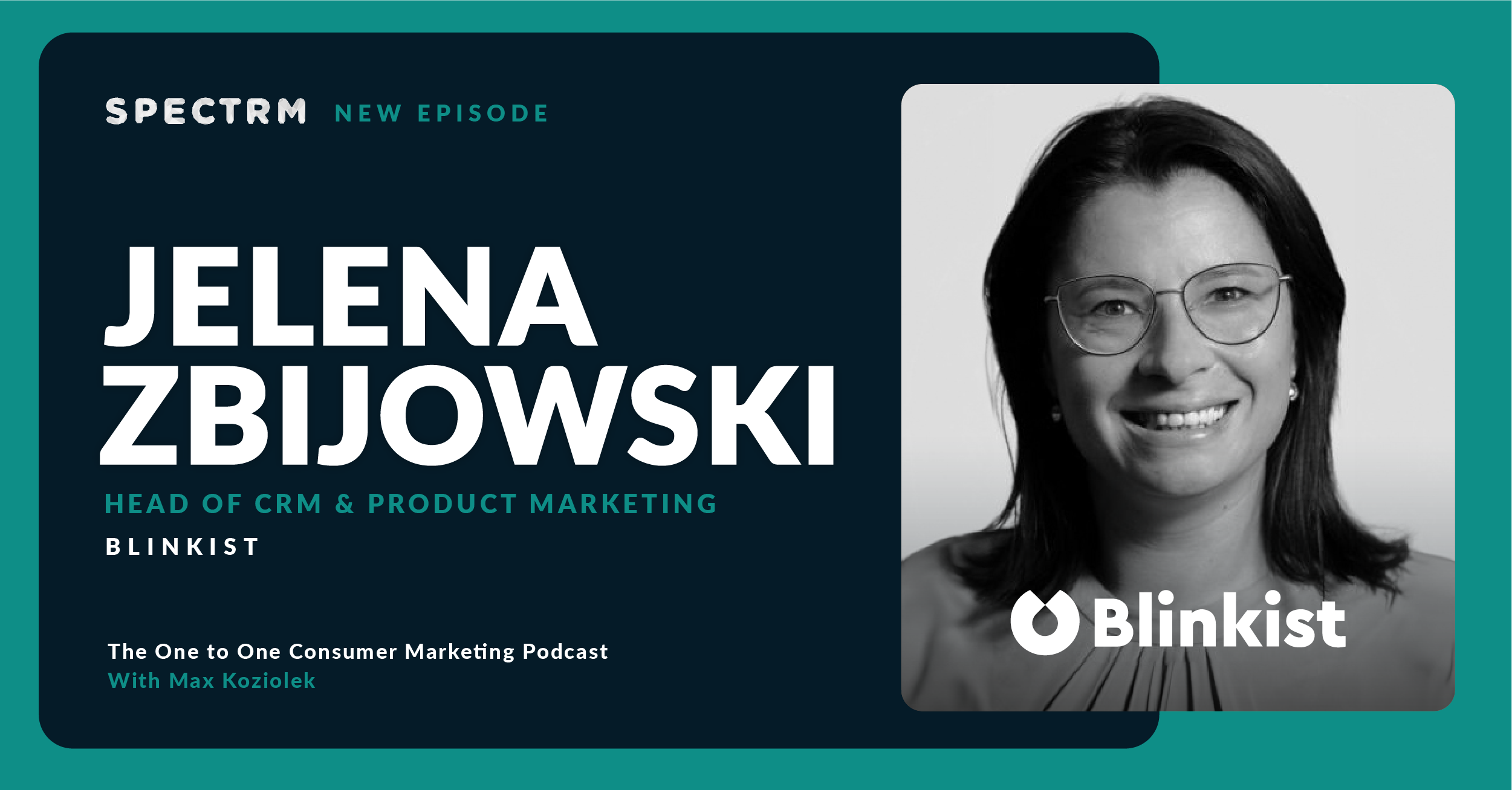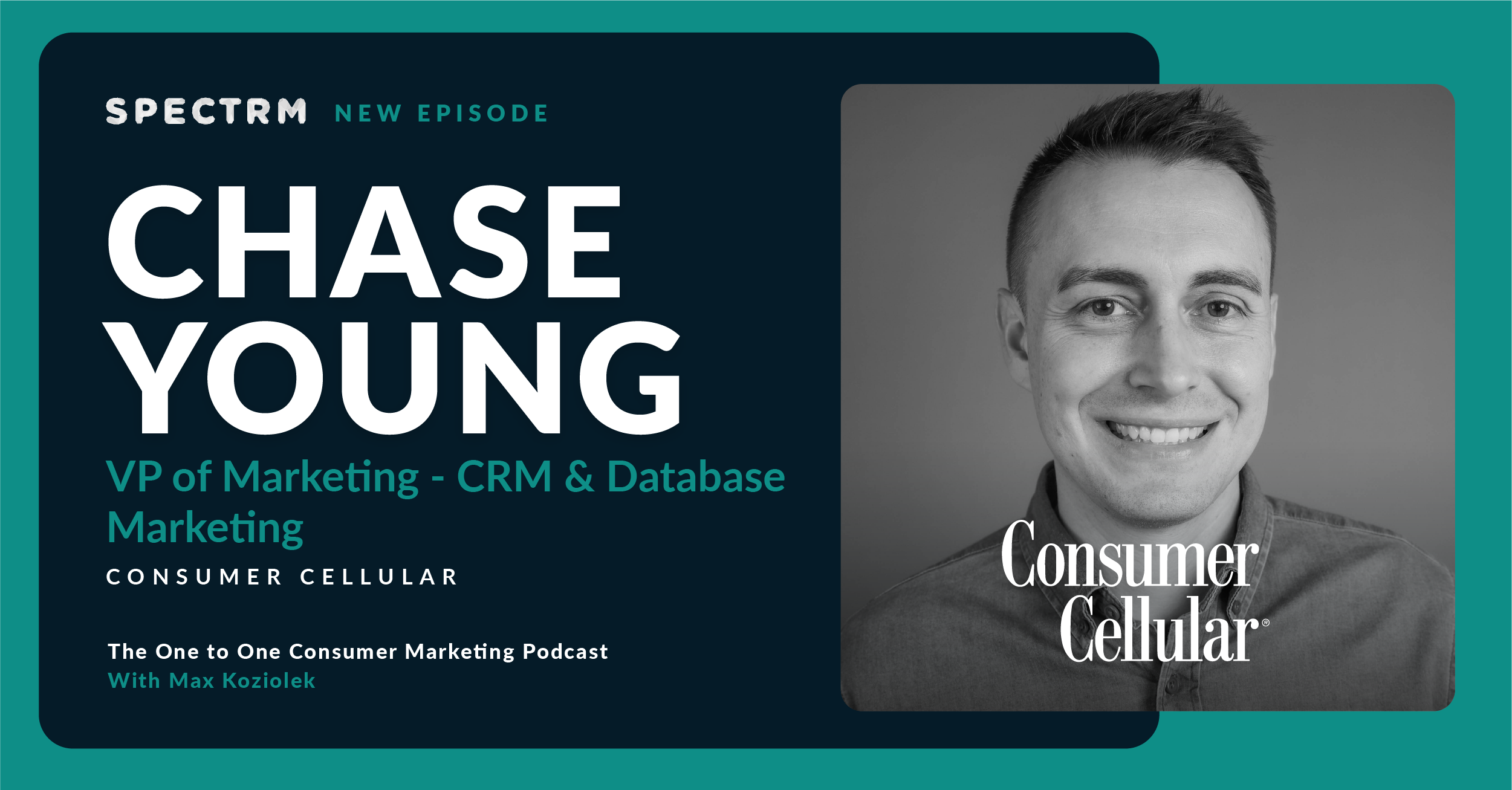Summary
Ben speaks with Tobias Lüder, Head of CRM, Europe at Delivery Hero, an online food delivery service. They discuss the place of CRM in gaining and keeping customers, and the challenges data privacy regulations — especially GDPR — pose to customer retention success today. They also talk about the different channels Delivery Hero uses and for which purposes, what it’s like to be behind the scenes on multiple app migrations, and why marketers need to keep things simple when talking to their customers.
Topics discussed
- Tobias’s journey in CRM marketing, from starting as a junior and working up to Head of CRM at Delivery Hero, responsible for the European market.
- The current state of consumer marketing, where customers are seeking the best deals, fatigued by ads, and not engaging as much with push notifications.
- The biggest challenges to CRM today, including how GDPR is changing how marketers need to engage with customers to opt in to emails and notifications.
- Why Delivery Hero works with a control group so they can determine how their retention efforts actually impact the company.
- The different channels that Delivery Hero uses to engage with and retain customers, and the different content approaches they take for each.
- What it’s like to work on 18 migrations and rebrandings, how changing the backend of an app changes how you engage with customer data, and why CRM is a crucial tool to get customers to the new app.
- Advice for marketers on how to keep their efforts simple, why it’s sometimes necessary to not send a message, and the detriment of over-engineering experiments.
- What the future of CRM will look like, including how companies will become more human in their interactions with customers.
I think that the communication will change from — or at least I hope the communication will change from — the companies. So the companies will talk to you like a friend, give you advice, and try to help you instead of sending you something like a big corporation. So I think this shift will definitely happen. I hope so, at least. Which also means that sending the right messages at the right time, as we already spoke about, so that communication is going to get more human, hopefully.
Guest biography

Company overview
Delivery Hero is the world’s leading local delivery platform, operating its service in over 70 countries across Asia, Europe, Latin America, the Middle East and North Africa. The company started as a food delivery service in 2011 and today runs its own delivery platform on four continents. Additionally, Delivery Hero is pioneering quick commerce, the next generation of e-commerce, aiming to bring groceries and household goods to customers in under one hour and often in 20 to 30 minutes.
Industry: technology | www.deliveryhero.com
Subscribe to the podcast newsletter
Transcript
00:04
Ben
Hey, everyone, and thanks for listening to and watching The One to One Consumer Marketing Podcast. Today I am speaking with Tobias Lüder at Delivery Hero. Toby, thanks so much for chatting with me today.
00:16
Tobias
Yeah, of course. Thank you so much for having me on the show.
00:20
Ben
Yeah, no, I’m looking forward to our conversation. Before we get started, can you tell everyone more about yourself, your background, how you ended up at your current role at Delivery Hero and what you’re doing there?
00:33
Tobias
Yeah, of course. I’m Toby. I’m based in Berlin. I’m German and I studied business administration. I was always interested in marketing, so for me, it was natural to also pursue a career in marketing. Initially, I wanted to be an SEO consultant, which then didn’t really work out because I got a job as a CRM manager. In the beginning, I didn’t even know what it was, so I Googled what it actually means. I got my first job in CRM. Since then I’ve been working in CRM for six years now. Five of those I’ve been working at Delivery Hero and I started off as a junior, but yeah, made my way up somehow. Now I’m the head of CRM at Delivery Hero and I’m responsible for the European markets.
01:18
Ben
Nice. We’ll have to get into how you made your way up somehow to become kind of a CRM leader at Delivery Hero. I’m sure you’ve seen various things in terms of what you’re actually doing on a day to day kind of job as you’ve moved through those roles. Can you talk me through kind of the benefits of having done those things yourself and then moved into a more leadership role? How has that changed as you’ve become a leader?
01:44
Tobias
Yeah, obviously in the beginning when you start off as a junior, you don’t know much. I was benefiting a lot from having a big team and learning everything from a lot of peers, but you’re setting everything up yourself, it’s mostly execution at that point, which then in return is now benefiting me because I know exactly what my team has to do. I can set expectations and I know the technical background of something, so I know if something is technically possible, how long it’s going to take. So it’s really good for expectation management. Also, if you have a big team, you can always give advice on certain things. What I think is not as easy and I also had to have some time to adjust to it is that you think a lot about the tool, because if you work with the same tool the whole time, you always think in this tool.
02:32
Tobias
You really have to do at some point is you have to look outside the box to think about new possibilities, also involve other teams. Right. I’m not only managing my own team, but I’m also working closely with product and so on, looking for new features, new capabilities that are meant for retention but not actually executed by my own team. That’s, I think, the one thing you have to watch out for, I think that’s easier if you change companies because it might not be aware of the tools, so you might not know the technical limitations that you might have.
03:06
Ben
Yeah, but it does give you a very strong footing, I think, to be also a good manager, to understand the tools that your teams are working in every day, to understand really like the technical foundation of that. I think that gives you it’s definitely a strength. You’re right, I think I’ve experienced this myself as well. When you move more into a leadership role, you also have to give up control of the tool to some extent and you have to become much more a coach, much more an understanding of also, I think, giving you’re not always going to be the technical specialist. It’s hard to stay on top of everything. Have you noticed that as well as you kind of have grown your team, that the people that you have in place, managing particular parts of it, are sometimes come to you with ideas or come to you with new things that can improve the stack as a whole?
03:55
Tobias
Yeah, definitely. Obviously, if you move more into a leadership position, you lose track a bit of the tool. Right? The tool is developing rapidly. Usually our own industry is moving very fast right now, so there’s a lot of new developments and my team is usually aware of those way earlier than me. They come up to me, ask, hey, can we do this or can we try this? I’m always encouraging them to just do it in a controlled manner, of course. Yeah, that’s usually the best part because you’re obviously giving up control. This also has a lot of benefits. Right. You don’t want to micromanage your team. So I think that’s very powerful.
04:35
Ben
Yes. I think that’s one of the things, if you come from the background of having done it yourself, you have to take some time to get out of that micromanagement approach. I know it was always hard for me, but it is how you’re going to get the most out of your team. I mean, you touched on it as far as the pace of change and things rapidly evolving all the time with the tools. Can you summarize how you see the current state of consumer marketing, maybe from a tool perspective, but also more broadly?
05:04
Tobias
Yeah, so from a CRM perspective, what I see right now is that lots of the communication is based around deals. This might also because of the macromic factors, but people try to get the best deal if they can expect a similar service from you or your competitor. Everything is really driven by the price right now. I think that building up brand loyalty is very difficult right now in this environment that people always try to get the best deal out of everything and in general, people just receive a lot of notifications. Right. This has always been the case, but I think there’s like an ad fatigue and people really don’t spend much time to understand your product, to read your emails, or to pay attention to your push notifications. So, yeah, they’re always looking for this price tag that might give them a good discount or a good voucher.
05:54
Ben
Yeah, I think I can imagine that in a competitive market, especially in the delivery space, that it really becomes like that discount is so key. Interesting how you mentioned ad fatigue, but in the context of notification, so almost kind of notification fatigue or marketing fatigue more generally, because I think we wouldn’t necessarily associate notifications directly with ad fatigue. Me personally, I know that I go through that a lot, that you do tend to shut off certain apps. Like in their notifications, you’re trying to take control of your notification life, your phone life, a bit more to stop with the distractions. That something that you’ve found very challenging in your current role?
06:39
Tobias
Yeah, it’s definitely a thing. Also for iOS, you have different features now that you can blend out certain notifications, you can take out the urgency and you have like a summary, for example. You can definitely see that push notifications are not as effective as they were before. So, yeah, we can definitely see that, but there’s still no way around it. We still have to use push notifications. Sometimes you can just be a bit smarter when you want to send those and when you can expect a reaction for the message that you sent.
07:07
Ben
Yeah. You’ve touched on it but in terms of in that space, right. In a heavily kind of discount focused space where there are a lot of competitors and there’s a lot of different companies vying for the attention of the same consumer. How do you think about retention and lifecycle marketing in that space? Does retention and lifecycle marketing have a big place in your current marketing team strategy?
07:33
Tobias
Definitely, because right now, I think basically every business wants to make money right now, so everyone wants to be profitable. Most companies already spend a lot for acquisitions. Obviously you make most of your money with already existing customers and you want to make sure that you improve the customer lifetime value and that you actually make money with the customer that you paid for. It definitely has a big place in the company. Lifecycle management is very important to also get this personalization aspect within your marketing communication. Right. People expect to be treated differently if they are new customers. For example, you also need to shape your strategy. For example, you need to be a bit more educational, explain your product, explain how the app is going to be used, or even just get them to actually download the app. You have to treat them very differently.
08:24
Tobias
And VIP customers are the same. VIP customers, they always expect a bit of a different message, maybe a better deal or some personalization. It’s definitely super important in our space.
08:39
Ben
Yes, it sounds like really building out those different cohorts of customers and then how you treat them is pivotal to how you shape your strategy, maybe outside of what you’re focusing on directly within CRM and kind of retention and lifecycle has the role of CRM. You mentioned that every company is trying to be profitable now and that there’s more focus on retention and kind of getting more from existing customers than acquiring new customers. Is that the case at Delivery Hero? Have you seen a big shift in that over the last six months?
09:13
Tobias
There has been a bit of a shift. We’ve definitely grown our CRM budget just because the user base is naturally evolving. If you have more customers, you can also spend more money on those customers. Right. And you need to keep them happy. What you can also see that right now, acquisitions, the budget for acquisition marketing has also grown because it’s more competitive, as you also touched upon earlier. It’s definitely important to get people inside the funnel. Right. The CRM is a lot, but it’s not everything. You always need new customers to come in from top of the funnel, via Sessions, for example, to convert and then go into the user base. That’s just like the way it goes. I wouldn’t say it’s specifically to CRM, but yeah, in general, obviously, the role of CRM has definitely got more attention now.
10:00
Ben
Yeah, more attention on retention. That’s a theme that I’m hearing a lot these days that I think is very important as businesses try to adapt to a very competitive and quite just a different economic climate as well. You mentioned iOS 14, like, struggling to engage some of your customers with notifications when they turn those things off. Can you talk me through some of your biggest challenges when it comes to customer retention and loyalty right now?
10:29
Tobias
Yeah. The biggest challenge that we usually have in Europe is, in general, GDPR and getting people to opt in to emails, to push notifications and so on. Actually to be able to actually do marketing right, because you can have the best set up in retention if you don’t have a channel to actually send. It’s kind of a nuisance. Right. That’s like the biggest challenge right now, to get people to subscribe to all of those messages and to obviously keep the app right. To not deinstall the app right away. I think that’s like the biggest challenge so far. We had some tool integrations, especially for iOS 14, which really helped in app messages that just pop up and also gives you a bit more context so you can personalize them and you don’t have to go with the standard messages that you would receive from the system, but you can rather explain them what this is actually for.
11:20
Tobias
Why do you want to send email notifications? You can advertise it a bit better, you can tell them, hey, you can sign in and then you will get promotions, deals, whatever. Have a bit of a marketing framework on this.
11:32
Ben
Okay, so you have those challenges, but in some ways it’s more kind of attention is being paid to how you manage the expectation of your customers within that experience and to try to push them to actually subscribe to those notifications. You’re finding ways to create those incentives.
11:50
Tobias
Okay, yeah, it’s definitely also changed some of our metrics. Right. I’m not sure if about the email feature, but essentially every email that you get to an iOS inbox is already opened by default, which obviously has a big influence on all of our KPIs because then all of a sudden the open rate spiked. But no one actually read the emails. Right. You pay more attention to the click through rate because this is the one thing that’s not changed because of this change. But yeah, they’re like some smaller things. You can adapt to it, but it’s never going to be perfect. It definitely screwed some of our KPIs as well.
12:21
Ben
Yeah, I believe it. I think Apple Mail privacy put a lot of email marketers on edge. You mentioned, okay, so open rate is something that you essentially ignore. That’s too bad, you could have maybe got a promotion based on the open rate alone overnight. You’re focusing more on click through rate. Are there any other kind of metrics that you’re tracking in relation to retention and loyalty that are important to you beyond just like those kind of initial engagement metrics?
12:49
Tobias
Yeah, so actually we’re not paying that much attention to the engagement metrics. We’re using this to see if the channel is healthy and if maybe from a content perspective we need to send something that’s maybe more relevant. What we mostly focused on obviously would be orders or like incremental orders. In that case, we always having a control group. It’s like the beauty of CRM that you can always test everything. We’re definitely taking advantage of this. We’re paying more attention to things like the Voucher value that we’re giving out the expiry date of the Vouchers and having different tests like this. Yeah, the KPIs are mostly around this. Obviously order frequency and so on are very important for us, but those are more the bigger KPIs that we want to optimize for.
13:34
Ben
Okay, yeah. Order frequency, I’m assuming kind of average order value and then essentially you get into customer lifetime value as being is that would you say customer lifetime value is kind of your North Star KPI, like the big one for you?
13:47
Tobias
Yeah, pretty much. We’re not only using the customer lifetime value that looks into the past, but rather what’s the expected future value of the customer, which I think is very powerful. You can only achieve this if you have a big data science team, of course. You don’t only look into what happened in the past, but what’s going to happen most likely in the future. That’s like one of our KPIs and.
14:10
Ben
Based, I’m assuming also on the expected kind of duration of the customer lifetime and things like that as well.
14:18
Tobias
Exactly.
14:19
Ben
You mentioned just to dig into that because I think it’s often the details that matter in terms of how you’re doing CRM and thinking about retention. You mentioned incremental purchases. Typically when you’re testing new channels or new offers and things like that, are you always doing this against a control within your CRM and you’re testing the actual incremental lift of your programs?
14:41
Tobias
Yeah, so we always have a control group that’s not getting anything from our campaign. What we also have to also verify that what we’re doing in retention is actually beneficial for the company. We have a global control group, so those guys never receive any CRM communication from us. They’re excluded from every single campaign that we send. We can also verify on a very high level basis, okay, what we’re doing actually drives value to the company. So, yeah, I would encourage everyone to use this because if you have a campaign and a control group, usually the control group perform worse unless there’s like an external factor that maybe you didn’t account for this. By the way, also why it’s difficult sometimes to work with incremental orders because if you have a big promotion going on, let’s say free delivery for every customer, obviously the control group will also benefit from this.
15:38
Tobias
This might screw your results as well. You might lose incrementality even though the campaign was actually performing way better than you would think. That’s also one of the key changes with it.
15:47
Ben
Just so I understand, you mentioned like the global control group that is really across every market, you’ve decided there is this subset of customers that will never get anything from us and we’re just going to see always compare back to that baseline. It’s very interesting. I think that takes like a certain mentality to accept in order to get true statistical significance and really measure lift that we’re just going to accept this group of customers. We could eventually try to get more money from them, but for the purposes of actually doing our modeling and testing, we’re going to never do that. I think that speaks very much to your focus on really doing true control group tests, which I think is a nice example. You mentioned email and the changes in open rates and how that affects. Are there other channels that you’re using? Can you talk me through your channel mix and whether you’re seeing certain channels perform better than others?
16:40
Tobias
Yeah, so I think every channel has the specific target audience. Obviously we’re using push notifications, we’re using inert messages sometimes. We’re also using SMS, it’s a bit tricky sometimes. Email, of course, web push we are also using not that much though, people don’t usually opt into this, but yeah, it really depends on the channel. Best performing, I can’t really tell you because most of the time what we’re doing is we’re checking what people are opted in for and we’re trying to use everything that they opted in for. Right. If you subscribe for push notifications, but also for email, we try to switch it up. We send you both. If you’re only able to receive emails, then obviously you’re only going to get emails. It’s also difficult or it’s important to understand how the channels work and what you can do with them. So, for example, an email is like the best example to do educational content to explain something that’s a bit more complex, maybe especially for new customers, it’s a very good tool.
17:39
Tobias
Or if you have partner promotions where you have to explain like a giveaway or something. Push notifications, on the other hand, are way more timely. If I send you a push notification close to dinner, you might change your mind. You might order in for dinner, for example. The conversion is obviously way higher for push notifications. Also with the deep link, I can just get you way down the funnel, right? I can essentially take you directly to your basket, for example. The conversion rates for push notifications is obviously way better, but communicating with old customers that might not even have your app is obviously only possible via email. Yeah, the best results I think are for SMS, but it’s also where the most complaints are coming in. People also complain that they receive an SMS, it just stands out. Like SMS I think on average have an open rate of like 99%.
18:30
Tobias
So everyone is watching those. Yeah, not everyone likes to receive SMS notifications.
18:37
Ben
Yeah, I think also, I guess in the context of some of the challenges you mentioned around GDPR, that probably also has some issues, maybe going back to that . Obviously you’re talking about multiple channels, about just essentially getting in front of people on every channel that you can based on their opted in preferences and things like that. How big of a headache has GDPR been for you? How do you manage consent at the scale that you’re talking about? Effectively, it’s been a big challenge for.
19:09
Tobias
Us, especially in the past when it wasn’t that GDPR heavy. You could send emails to people if they placed an order, essentially because you can assume that they’re interested in your content, and then you’re able to send emails. Once GDPR hit and we actually had to have, like, a marketing consent, our opt in rates dropped drastically. Of course, we’ve then built features also from our side to increase opt in rates again. So, for example, we had inept messages popping up for people that are unsubscribed to ask them, hey, you can subscribe again. This would appear like, every month if you’re unsubscribed. We tried this for both web and app. It’s definitely painful for us if you all of a sudden lose like, half of your contact level base due to the EPR.
20:00
Ben
That for you has been also a focus not just getting the most out of the people that are subscribed in various places, but really trying to increase the number of opt ins across the different channels.
20:11
Tobias
Exactly.
20:14
Ben
Okay. I think what for you’ve touched on a few of the things that are challenges. What is maybe something that makes you more optimistic or that’s more exciting for you in terms of a marketing trend or a technology that’s available today?
20:29
Tobias
I’m super interested in this whole AI topic. This has gotten, like, a lot of hype recently, of course, even though it’s around for way longer than the hype is going on right now. I think that’s a great opportunity, especially for CRM. So, CRM is a very content heavy channel, right? You need a lot of copy, you need a lot of creatives for it. Usually the time to initiate a campaign to actually go live is usually like a week, sometimes even a month. It depends how many people you can have. The best CRM content is usually real time. If I send you a notification that’s based on something that happened today, then it has way more impact than if I sent you a Christmas campaign sometime in December, for example. I think that AI can really help make CRM faster to be more relevant in the future with less resources, especially if you work in a company that has multiple languages and you have so much copy to prepare for anything.
21:25
Tobias
I think AI can help not only CRM, but especially CRM.
21:32
Ben
Yeah, I think that’s a great, like, the time to notification almost can accelerate a lot, so therefore you get exactly what you want to get in front of people quickly. I know that at Spectrm as well. We work with a lot of international customers, and the translation aspect is a huge unlocker for us. Like, the ability to use something like AI to quickly translate entire conversation structures, entire customer journeys, is something that we’ve seen as a huge asset. I’m sure that in your case as well, if you had the ability to make something timely and then quickly push it out to 15 different languages and markets, like the amount of engagement, and then ultimately the repeat purchases would be very different. I think, yeah, there’s lots of reasons to be excited. On the technical side, I know we’ve talked about this outside of the interview, so I wanted to just bring it in as well.
22:24
Ben
You’ve done a ton of migrations, so it’s not something that everyone has done, I think. Can you talk about that process? How many have you done? What was it like? What are the reasons behind why you’ve done so many kind of integrations and migrations in CRM?
22:41
Tobias
Yeah, so I think in total I’ve worked on at least 18 migrations and rebrandings. It’s because of the history of Delivery Hero, in a way, because in Europe, how Delivery Hero group back then was by acquiring new brands, new companies to enter the market. Right, so we acquired new brands, but also new CRM tools, new back ends with completely new user bases that we can start with. At some point, obviously, because you want to scale it up, you want to be efficient, you need to integrate those into your own brands or your own tools. You always have to do a migration. Maybe to explain a bit of the difference between a rebranding and a migration, because I think not everyone might know this rebranding on paper relatively easy, because the only thing that you do is you change the color of your brand, which is not easy at all.
23:30
Tobias
It sounds a bit more easy if I say it like this. You keep your user base and it’s easier. You can essentially just continue with your marketing. You can use the same channel and can reach the same customers. You don’t have to worry about opt in for any changes. What happens during a migration, you’re changing the complete app, you’re changing also the back end. There are also different scenarios, but in most cases it means that you have to tell your customer to download a completely new app, which is obviously a huge risk for your whole user base because everyone you can lose every customer that you have. It also has technical implications because what you’re essentially doing is you’re creating a second profile for every customer, like one for the old app, one for the new app, and you have to keep them in sync.
24:13
Tobias
If the customer from the old app, for example, unsubscribe from anything, you have to reflect this as well on the new app as well. It’s a lot of different challenges that you have during a migration, but CRM is like a crucial tool to actually get those customers come over to the new app and start building like a brand love again, essentially.
24:34
Ben
Yeah. It just hurts my head even thinking about the technical aspects of managing consent and then getting all of those customers over to a new CRM and having them be engaged. Having done so many, what is the most effective way for you to do it? Are you identifying kind of cohorts again of like, how you treat are you treating certain people differently as you try to migrate them based on their behavior? Or is it more, okay, let’s just get everyone over, let’s tear off the band Aid. Like, what is the approach for you?
25:08
Tobias
Yeah, so usually you have to work with what you have. If you use a different CRM tool, you might not have all the data points you need. One example is in one migration, I just had the total amount of orders, but I didn’t know when the last order was actually done. This customer, even though had 50 orders where I didn’t even know how recent was this order. This could be an inactive customer, essentially. That’s one thing you have to figure out what data points you can actually use and how valuable are those data points to you. Usually what you do is in the beginning, you have like a natural transition. Your most active customers and your most loyal customers will always do the switch first so you don’t have to incentivize anything. You’re right, you definitely take the predicted future value of those customers and then you can try to incentivize them and then treat them differently.
26:00
Tobias
Right. Your most VIP customers that you definitely want to keep, try to give them a higher incentive than someone that maybe has been like a regular customer in the old app before. So you treat them differently for sure.
26:12
Ben
Yeah, I guess. Also you brought up that predicted value again. Really understanding what is the value of even bringing this customer over and how much am I willing to pay to do that? I think that’s obviously a key part of that. You’ve touched on it a little bit. I think you mentioned personalization at the start as well. I think every brand right now is trying to personalize marketing at scale, and it’s obviously a major challenge, particularly when in the context of 18 migrations, multiple brands, like different apps coming together, how are you kind of connecting one to one with current and potential customers right now?
26:46
Tobias
I think if you want to do this at scale, it’s super important that you have multiple teams working on this. You need everyone on board, you need your product team to provide you specific data points that you might need to have this personalized communication. Also you need a good commercial team with good deals. You need bi for the right set of data. You need, in general, people that are interested in marketing, which is not always the case. When you talk about products, they’re usually quite annoyed about inert notifications, ruining their funnel and everything, ruining their CVR. That’s one thing if you want to do. It at scale. You need everything. The other thing is you need personalized messages, but also the right timing for everything. To give you one example would be like a replenishment campaign. You ordered something, let’s say you order toilet paper and then it’s like time to refresh and buy toilet paper again.
27:40
Tobias
If I don’t send you this message at the correct time, you might not be interested, even though you’re interested in toilet paper, for example. It’s a lot of timing that’s also very relevant. I think that not many people are talking about this timing aspect as well. Mostly about, I don’t know, the first name, last name, personalization aspect of an email.
28:00
Ben
Yeah, but timing is so crucial. Like right message, right person, but right time is really what’s going to influence the purchase behavior the most. You mentioned also earlier on kind of how close you are to the action.
28:15
Tobias
Right.
28:15
Ben
You mentioned the difference between email. Email is educational content, but in app notifications will immediately drive a conversion because it’s just so much closer to the checkout process. Your options are you have more options in terms of creating that more seamless connection. So I think that’s very true. I think the timing, the more that I talk to kind of heads of CRM, I’ve really seen that they’re digging into data around the timing of when people buy, how it fits within their current day, and using that as a key trigger as far as personalization. That definitely aligns with what I’ve seen, maybe taking a step back and thinking about your career, your move from individual contributor to leader in CRM, a delivery hero. Can you talk through three pieces of advice you would give other consumer marketers, other CRM marketers?
29:06
Tobias
Yeah, so I think one thing is definitely what I learned is that you have to keep it simple. You might understand your product, but your customers don’t. It’s really important that you explain it in very simple words. Like talking about CRM, people will not take the time to read through your whole email. People will maybe see they had an image, they will read like the first lines, but they will not spend that much time on it. So keep it simple. Also, it’s more time efficient in that way. Also talking about the timing aspect, sometimes it’s just also good for you to understand when to not send a communication. Sometimes it’s not only about timing, but should I send this message at all? Because you might always be at the risk of like this person might unsubscribe, for example, and then you have to win them back and so on.
29:52
Tobias
It can lead to more harm than this. So, like, learning when to not send a message is also quite important, especially because everyone’s pushing you to send more and more, but sometimes less is more, for sure. The third thing is definitely that experiments with CRM is everything, but you shouldn’t over engineer your experiments. Most of the time it’s better to do very simple and short experiments to see if it works or not. If it doesn’t work, then you can pivot quickly and if it works, you can flesh it out. It’s very important to do those very quick tests and to not overthink and over engineer those tests. I think those would be like the three main points of advice.
30:34
Ben
That’s good advice. Keep it simple, don’t always send a message and don’t over engineer some of your tests. I think there is definitely a tendency to just always go with more and more complex is better, but it’s rarely the case. I feel like simpler is better and kind of time to learning is better and your time to learning is much faster when you are able to execute a simpler test. Looking, you mentioned AI five years from now. What do you feel like the future of CRM marketing looks like? What has changed? If I have this conversation with you.
31:09
Tobias
In five years, I don’t know, I’m going to be five years older. I don’t know. That’s the only certainty, that’s for sure. No, I think it’s tough to say because five years is very long in our industry, but I think that the communication will change from or at least I hope the communication will change from the company. The companies will more talk to you like a friend, give you advice and try to help you instead of sending to you something like a big corporation. I think this shift will definitely happen. I hope so at least. Which also means that sending the right messages at the right time, as we already spoke about, so that communication is going to get more human, hopefully. The other thing that I think is going to happen is that everyone’s going to rely more on first party data, which is great for CRM, but I think that tracking is going to be more restricted in the future and that you’re going to take a lot of advantage from CRM data.
32:08
Tobias
Right. If you send a survey to your customer, for example, or just track user behavior, I think that those are like the points of data that we’re going to use most for our marketing communication.
32:21
Ben
Yeah, I couldn’t agree more. As someone who at Spectrm, we are in the messaging space, in the conversational marketing space, hearing you say that you want things to be more human, more on the ways that people interact with friends, and then more based on first party data, it definitely sounds like it’s the kind of future that we also see as the future. I’m glad that your vision is the same there. That’s all we have time for today. Toby, I think really enjoyed our conversation. If people want to learn more about you and the work that you’re doing at delivery hero. Where should they go?
32:53
Tobias
I guess LinkedIn is the easiest one.
32:56
Ben
Okay, well, you heard Toby. Reach out to him on LinkedIn. If you listen to the episode, feel free to DM him. Please DM me if you have any feedback, suggested topics or speakers. I always love to hear from people that are listening to the podcast. As a reminder, if you want to learn more about Spectrm and the work that we do in messaging, go to Spectrm.io. Or check out Spectrm on LinkedIn. Thanks so much for listening today will be thanks again for joining. It’s a pleasure having you on the show.
33:23
Tobias
Thanks for having me.
